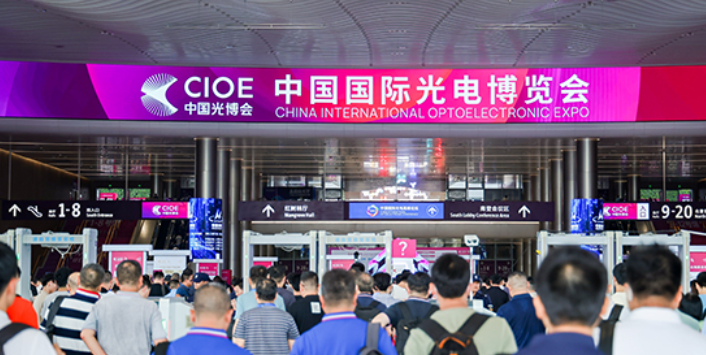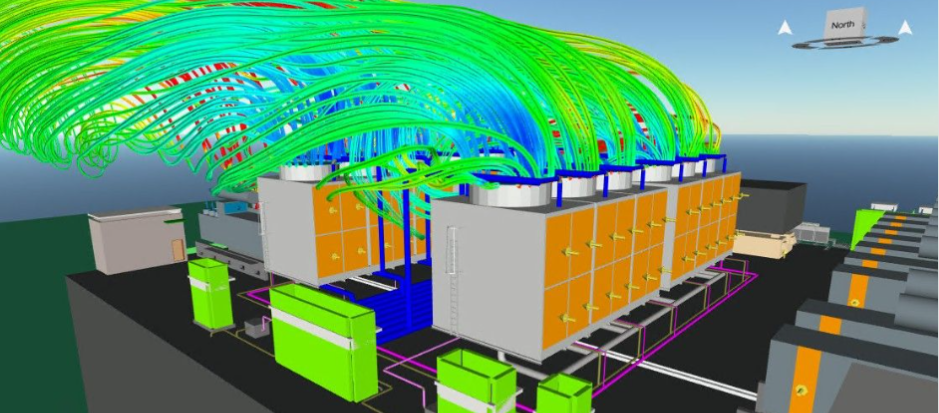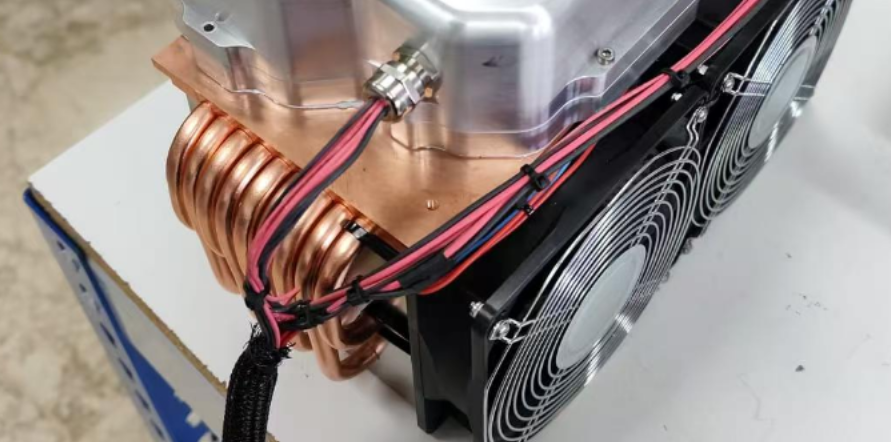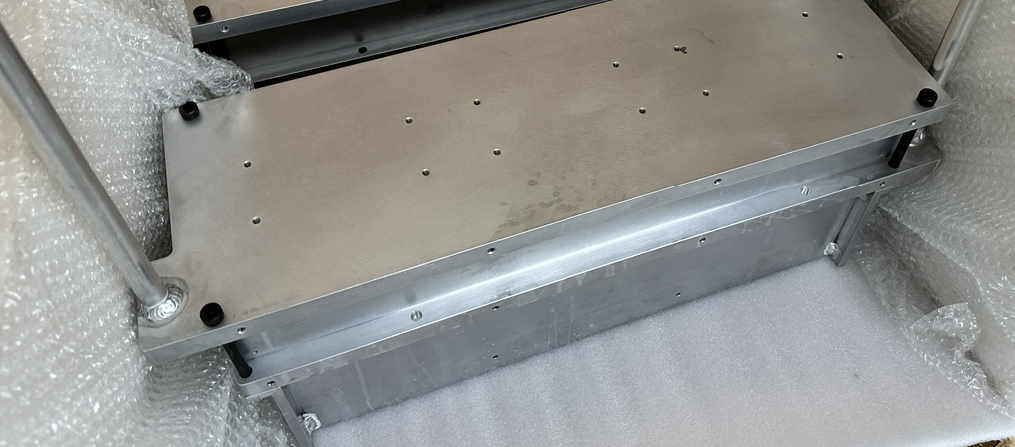Ever wondered how sleek laptops stay cool under intense workloads or how electric vehicles manage battery temperatures on scorching summer days? The secret often lies in the humble heat pipe—a passive thermal device that can move heat with incredible efficiency, rivaling the conductivity of pure copper. As electronic components become more powerful yet more compact, designers face the constant challenge of preventing hotspots without adding bulky heat sinks or noisy fans. That’s where heat pipes shine: by leveraging phase change and capillary action, they deliver exceptional thermal performance in a slim, lightweight package.
Heat pipe thermal conductivity describes the ability of a heat pipe to transfer heat through vaporization and condensation within a sealed tube. Thanks to this two-phase mechanism, heat pipes can achieve an effective thermal conductivity of tens of thousands of watts per meter-Kelvin—orders of magnitude higher than solid metals—enabling rapid heat spreading in high-density electronics.
In this article, we’ll unpack what makes that astounding conductivity possible, explore the roles of working fluid, wick structure, and orientation, and reveal how design tweaks can unlock even greater performance. Stay with us, and you’ll discover not just the theory but real-world strategies that leading thermal engineers use to conquer the heat challenges of tomorrow’s devices.
1. What Is Heat Pipe Thermal Conductivity and Why Does It Matter?
Heat pipe thermal conductivity refers to the effective heat-transfer capability of a sealed tube using phase change and capillary action. By evaporating a small amount of working fluid at the hot end and condensing it at the cold end, a heat pipe achieves apparent conductivity up to 100,000 W/m·K—far exceeding solid metals—and enables rapid, uniform temperature control in compact electronics.
At its core, thermal conductivity (k) measures how well a material or device conducts heat. Traditional solid conductors like copper reach around 400 W/m·K, but heat pipes regularly outperform them by two orders of magnitude. This astonishing performance comes from a two-phase cycle:
- Evaporation: Heat input vaporizes liquid in micro-grooves or wick structures.
- Advection: Vapor travels along the pipe to the cooler section.
- Condensation: Vapor releases latent heat and returns to liquid form.
- Capillary Return: Liquid wicks back to the hot end, ready to repeat.
Why is this so critical? As power densities in CPUs, GPUs, telecom modules, and EV battery packs continue to climb, managing heat in ever-smaller spaces becomes a make-or-break factor for reliability and performance. Uneven temperatures lead to thermal stress, accelerated component aging, and even sudden failure. By bridging hotspots and spreading heat quickly, heat pipes ensure:
- Uniform Temperature Distribution: Prevents local thermal runaway.
- Reduced Thermal Resistance: Lowers junction-to-ambient ΔT for higher efficiency.
- Compact Thermal Solutions: Replaces bulky fins or fans with slim, passive elements.
Quantifying the Advantage
| Material / Device | Thermal Conductivity (W/m·K) |
|---|---|
| Copper (solid) | ~400 |
| Aluminum (solid) | 205 |
| Standard Heat Pipe | 10,000–50,000 |
| Micro-groove Heat Pipe | 50,000–100,000 |
Notice how even a basic heat pipe can outperform copper by a factor of 25 to 125. In practice, that means designers can move the same heat through a fraction of the cross-sectional area, enabling thinner assemblies, lower weight, and fewer mechanical constraints.
Real-World Impact
Consider a high-end gaming laptop where the CPU dissipates 150 W in a chassis just 5 mm thick. A copper bar of equivalent performance would be impractically bulky, while a heat pipe network can be integrated into the motherboard, routing heat to edge vents without adding noise or vibration. In data centers, arrays of heat pipes attached to server racks can reduce air-conditioning loads by up to 15%, translating into substantial energy savings.
Critical Factors That Drive Conductivity
While the evaporation–condensation cycle is fundamental, actual performance depends on:
- Wick Structure: Determines capillary pressure and maximum heat transport.
- Working Fluid: Fluid choice (water, ammonia, alcohol) sets operating temperature range and latent heat.
- Envelope Material: Copper or aluminum walls influence conduction into and out of the pipe.
- Geometry: Length, diameter, and wall thickness control thermal resistance and startup behavior.
By understanding these variables, thermal engineers can tailor heat pipes to any application—from subzero aerospace gear to high-temperature power electronics—ensuring reliable, efficient cooling no matter how demanding the environment.
2. How Do Heat Pipes Achieve High Thermal Conductivity?
Through a clever two-phase cycle—liquid evaporation at the hot interface, vapor advection to the cold end, condensation, and capillary-driven liquid return—heat pipes can achieve effective thermal conductivities up to 100,000 W/m·K. This phase-change mechanism leverages both the high latent heat of the working fluid and rapid vapor flow to outperform solid metals by orders of magnitude.
At the core of this performance lie two interlinked processes and several critical design parameters:
Phase-Change Heat Transfer
- Evaporation: Heat input vaporizes liquid in the wick or grooves at the evaporator.
- Vapor Flow: High-pressure vapor rushes through the adiabatic section toward the cooler end.
- Condensation: Vapor releases latent heat and reverts to liquid in the condenser.
Capillary-Driven Liquid Return
- Wick Structure: Fine pores generate capillary pressure that draws condensate back to the evaporator.
- Orientation Independence: Proper wick design ensures liquid return regardless of vertical or horizontal mounting.
- Continuous Loop: No mechanical pumps are needed—capillarity sustains the cycle continuously.
Key Design Parameters
- Working Fluid: Determines latent heat, vapor pressure, and temperature range (e.g., water for 1–200 °C, ammonia for –50–80 °C).
- Wick Material & Geometry: Balances capillary head (small pores) against permeability (flow resistance).
- Envelope Conductivity: Thin, high-purity copper walls (∼400 W/m·K) minimize conduction losses into and out of the wick.
- Vacuum Integrity: Eliminating non-condensable gases through high-vacuum evacuation preserves active heat-transfer area.
Advanced Configurations
- Loop Heat Pipes: Incorporate secondary reservoirs and evaporators to handle fluctuating heat loads and longer transport distances.
- Oscillating Heat Pipes: Create pulsating vapor–liquid slugs in serpentine channels for enhanced transient response.
- Hybrid Systems: Combine multiple phase-change stages or integrate with micro-channel cold plates for multi-temperature-level cooling.
Why It Matters
Because the evaporation–condensation cycle moves heat so effectively, designers can:
- Maintain ΔT < 1 °C over 200 mm at 100 W loads.
- Support heat fluxes > 200 W/cm² without dry-out in micro-groove pipes.
- Respond to transient power spikes in milliseconds, making heat pipes ideal for CPUs, power electronics, and aerospace avionics.
Next, we’ll examine how your choice of working fluid further influences these capabilities.
3. Which Working Fluids Influence Thermal Conductivity?
The choice of working fluid—commonly water, ammonia, or organic hydrocarbons—directly determines a heat pipe’s effective thermal conductivity. Fluids with high latent heat and favorable vapor pressures yield conductivity up to 100,000 W/m·K, while poor fluid selection can halve performance or cause dry‐out. Selecting the right fluid for your operating temperature and application environment is crucial to unlocking the maximum heat‐transfer potential of any heat pipe design.
The working fluid inside a heat pipe drives the evaporation–condensation cycle, so its thermophysical properties define the device’s thermal conductivity and operating limits. Let’s dive into the most common fluid families, compare their attributes, and explore how they shape real-world performance.
Common Heat Pipe Fluids and Their Properties
| Fluid | Latent Heat (kJ/kg) | Vapor Pressure @ 25 °C (kPa) | Operating Range (°C) |
|---|---|---|---|
| Water | 2,260 | 3.17 | 1 – 200 |
| Anhydrous Ammonia | 1,370 | 859 | −50 – 80 |
| Ethanol | 841 | 5.95 | −10 – 120 |
| Acetone | 519 | 24.0 | −20 – 90 |
| Methanol | 1,100 | 16.9 | −20 – 120 |
1. Latent Heat vs. Operating Temperature:
Water’s high latent heat makes it ideal above 1 °C, providing maximum energy transport per phase change. Below freezing, however, water solidifies—so ammonia or methanol steps in for cryogenic or subzero applications. Choosing a fluid whose boiling point sits well below your hot-end temperature prevents premature dry‐out.
2. Vapor Pressure and Heat Flux:
A fluid with too low vapor pressure at your system temperature won’t generate sufficient driving force, limiting maximum heat flux. For example, acetone’s moderate vapor pressure supports high fluxes in mid-temperature electronics but struggles at very low loads. Ammonia’s high vapor pressure, conversely, excels in low-temperature heat pipes but requires robust sealing.
3. Compatibility with Wick and Envelope:
Hydrocarbons can swell certain polymer wicks or attack brazed joints, so chemistry matters. Water may corrode copper unless properly inhibited. Always validate fluid compatibility with wick materials—sintered copper, nickel, or grooved copper—to maintain long-term reliability.
4. Thermal Conductivity Trade‐Offs:
Although water yields peak performance, organic fluids often offer more forgiving startup behavior under uneven temperature gradients. Methanol, with a moderate latent heat and vapor pressure, provides balanced conductivity and faster initial response in transient loads—important in devices subject to rapid power cycling.
5. Safety and Environmental Concerns:
Ammonia is toxic and flammable, requiring strict handling protocols. Organic solvents like acetone and ethanol are flammable, so designers must incorporate explosion-proof enclosures or inerting. In consumer electronics, water and methanol dominate for their benign safety profiles.
6. Emerging Fluids and Nanofluids:
Researchers are investigating water-based nanofluids—suspensions of nanoparticles—to boost latent heat and thermal conductivity. Early studies show a 5–10% conductivity increase, but stability and compatibility remain under evaluation. Stay tuned as next-generation fluids could reshape heat-pipe performance.
By matching fluid properties to your application’s temperature range, heat flux, and safety requirements, you ensure optimal conductivity and reliable operation. At Walmate Thermal, we perform in-house fluid compatibility tests, simulate phase-change dynamics, and recommend tailored working fluids to maximize your heat pipe’s thermal performance. Contact our experts to design and prototype the perfect heat pipe solution for your thermal management challenges.
4. What Role Does Wick Structure Play in Conductivity?
The wick inside a heat pipe creates the capillary pressure needed to return condensed working fluid to the evaporator, sustaining the two-phase cycle. Structure types—sintered powder, screen mesh, and micro-grooves—balance capillary head versus permeability. A fine-pored sintered wick delivers high capillary pressure for steep thermal gradients, while grooved wicks enable higher heat flux with lower flow resistance. Choosing the right wick is essential to maximize thermal conductivity and avoid dry-out.
Beyond phase change, the wick is the unsung hero that ensures continuous liquid circulation against gravity or uneven heating. Here’s how different wick designs influence performance:
- Sintered Powder Wicks: Millions of micro-pores provide capillary pressures up to 5000 Pa, enabling heat transport in vertical or inverted orientations. Permeability is lower, so they suit moderate heat fluxes (up to 50 W/cm²).
- Screen Mesh Wicks: Stacked stainless-steel meshes offer a compromise: capillary pressures around 1000–2000 Pa and higher permeability than sintered wicks. They support heat fluxes up to 100 W/cm² and faster startup.
- Micro-Groove Wicks: Precisely machined grooves (10–100 µm) yield very high permeability and minimal flow resistance, ideal for ultra-high flux (>200 W/cm²). Capillary pressure is lower (≈500 Pa), so orientation and filling ratio must be optimized.
- Composite Wicks: Hybrid designs combine a coarse-grained base for bulk flow with a fine-grained top layer for capillary lift—balancing high flux and gravity independence.
In-Depth Analysis of Wick Mechanics
Capillary Pressure vs. Permeability: According to the Young–Laplace equation, capillary pressure scales inversely with pore radius. Finer pores boost lift but reduce permeability, increasing viscous losses. Designers must target a pore radius that meets both the maximum heat load and orientation requirements.
Filling Ratio and Startup: Overfilling a wick reduces vapor space and delays startup; underfilling risks dry-out under transient loads. Typical fill ratios (fluid volume relative to wick pore volume) range from 30% to 70%, depending on wick type and application.
Thermal Resistance Contributions: Total thermal resistance equals wick conduction resistance plus phase-change resistance. Sintered wicks conduct heat through the porous matrix, adding 5–20% to overall resistance. Mesh and grooved wicks, with solid conduction paths, can cut this overhead to under 5%.
Manufacturing and Scalability: Sintered wicks require precise powder selection and high-temperature sintering, increasing cost. Screen wicks are low-cost but may delaminate under thermal cycling. Micro-groove wicks demand advanced micromachining, suitable for high-value electronics.
Case Study: An EV battery module used screen-mesh wicks to achieve 80 W/cm² flux at 5 mm thickness. Later prototypes switched to composite wicks—retaining flux capacity while enabling inverted orientation for vertical modules.
By matching wick pore size, thickness, and material to your thermal requirements, you ensure robust fluid return, minimal thermal resistance, and reliable startup. At Walmate Thermal, our R&D lab tests wick designs under real-world cycling, guiding you to the ideal structure for your heat pipe solution.
5. How Do Temperature and Orientation Affect Performance?
Heat pipe conductivity depends on the operating temperature and gravity orientation. Each working fluid has a plateau where vapor pressure and latent heat are optimal. Above or below that range, heat transfer drops. Likewise, “gravity-assisted” orientation (evaporator below condenser) enhances capillary return, while “against gravity” setups reduce maximum heat transport by up to 50%. Proper design accounts for both factors.
Understanding these dependencies is vital for reliable performance in any application:
- Temperature Window: Every fluid exhibits peak conductivity near its saturation temperature where vapor pressure is moderate. Outside this window, either boiling is insufficient (low T) or pressure drops limit fluid return (high T).
- Gravity Effects: In vertical, evaporator-down orientation, gravity aids condensate flow, boosting maximum heat transport by 20–50%. Inverted or horizontal mounting relies entirely on wick capillarity.
Detailed Exploration
1. Saturation Pressure and Heat Flux: A heat pipe’s maximum heat transport correlates with saturation pressure. For water at 60 °C, vapor pressure is ~20 kPa, enabling high flux. Beyond 180 °C, pressure rises steeply, risking leakage or envelope rupture unless materials and sealing are upgraded.
2. Temperature-Dependent Viscosity: Working fluid viscosity drops exponentially with temperature, reducing flow resistance in grooves or wicks. Designers simulate viscosity curves to predict performance under varying loads.
3. Orientation Performance Curves: Empirical tests plot maximum heat load vs. tilt angle. A typical copper–water pipe may transport 200 W vertically with evaporator down, but only 100 W inverted or at 90° horizontal—guiding module placement in compact systems.
4. Transient Response: Rapid power spikes can temporarily exceed steady-state limits. Thermal capacitance of the wick and envelope buffers the load, but orientation still dictates how quickly condensate returns once the spike subsides.
5. Extreme Environments: In aerospace or high-vibration applications, orientation varies dynamically. Loop heat pipes or pulsating heat pipes are alternatives, maintaining conductivity independent of gravity through secondary loops or oscillating flow patterns.
6. Simulation and Testing: CFD coupled with two-phase flow models predicts dry-out and flooding in complex geometries and orientations, reducing prototype cycles and ensuring reliable field performance.
By analyzing temperature profiles and mounting constraints early in the design phase, you can specify the right fluid, wick, and envelope materials to maintain peak conductivity across all operating conditions. Walmate Thermal offers orientation testing rigs and temperature chamber trials to validate performance before integration.
6. Are Material and Geometric Factors Critical?
Envelope material and pipe geometry dictate conduction into and out of the wick and define thermal resistance. Copper walls offer ~400 W/m·K conduction, while aluminum provides weight savings at 205 W/m·K. Diameter and length influence axial resistance and startup time. Thinner walls speed response; larger diameters support higher flux but add bulk.
Successful heat pipe design harmonizes material properties with geometric parameters:
- Envelope Material: Copper is standard for electronics; aluminum for weight-sensitive applications. Nickel plating can prevent corrosion and improve solderability.
- Pipe Diameter: 2–3 mm tubes serve microelectronics; 10–20 mm diameters suit power modules. Larger diameter reduces vapor velocity, lowering pressure drop.
- Wall Thickness: Thin walls (<0.3 mm) minimize conduction resistance but risk mechanical deformation. Thicker walls enhance robustness.
- Length: Shorter pipes have less axial resistance but limited spatial reach. Modular networks of shorter pipes can replace a single long pipe.
In-Depth Considerations
1. Conduction Resistance: Total thermal resistance = envelope conduction + wick conduction + phase-change resistance. Envelope conduction should be under 10% of total to let the two-phase mechanism dominate.
2. Structural Integrity: Thinner walls and large diameters must withstand internal pressures up to 200 kPa and external forces from clamping or bending. Finite element analysis ensures compliance with mechanical specs.
3. Thermal Expansion Mismatch: Dissimilar materials (e.g., copper-to-aluminum joints) can develop stress under cycling. Brazing and diffusion bonding methods mitigate fatigue over thousands of cycles.
4. Manufacturing Tolerances: Precision in diameter and wall uniformity prevents hot spots. Tight tolerances (<±0.01 mm) are common for high-performance micro-groove pipes.
5. Integration with Fins or Plates: Flattened heat pipes or bonded assemblies improve conduction into heat sinks or cold plates. Surface flatness under 0.05 mm ensures uniform contact.
6. Custom Geometries: Bendable heat pipes allow routing around components; flat heat pipes pack into slim form factors. Walmate Thermal’s CNC bending and extrusion capabilities enable bespoke geometries without performance loss.
7. How Can Heat Pipe Designs Be Optimized for Maximum Conductivity?
Optimizing heat pipes involves selecting the ideal fill ratio, fluid, wick, envelope, and hybrid configurations. A fill ratio of 30–60% balances vapor space and wick saturation. Multi-evaporator or looped designs distribute heat across multiple sources. Advanced coatings and composite wicks further boost capillary lift and reduce thermal resistance.
Optimization is a multi-variable exercise that balances competing requirements:
- Fill Ratio: 40–50% ensures enough liquid for steady-state while leaving vapor space for transport. Too much liquid can flood the wick; too little causes dry-out.
- Hybrid Configurations: Loop heat pipes or oscillating heat pipes add liquid reservoirs or multiple evaporators, handling larger heat loads and orientation changes.
- Surface Treatments: Nanoporous coatings enhance nucleation sites, improving evaporation rates by 10–15%.
- Composite Wicks: Layering fine and coarse pores maximizes capillary pressure and permeability simultaneously.
- CFD-Driven Geometry: Simulations optimize groove profiles, bend radii, and envelope thickness before prototyping—cutting development cycles by 50%.
Case Study: Data Center Rack Cooling
A leading hyperscale data center integrated hybrid loop heat pipes with a 45% water fill ratio and composite wicks. The result:
| Metric | Before | After |
|---|---|---|
| ΔT (CPU to Cold Plate) | 18 °C | 8 °C |
| Airflow Requirement | 600 CFM | 350 CFM |
| Power Usage Effectiveness | 1.45 | 1.35 |
Such optimizations slash energy costs, extend component life, and simplify system design—demonstrating why nuanced heat pipe engineering is indispensable for next-generation thermal management.
Conclusion
Heat pipe thermal conductivity hinges on a delicate interplay of fluid dynamics, capillary action, materials science, and geometry. From selecting the right working fluid and wick structure to fine-tuning orientation, envelope material, and fill ratio, each design choice can amplify conductivity by orders of magnitude compared to solid metals. By leveraging advanced simulations, experimental testing, and innovative hybrid configurations, engineers can craft heat pipe solutions that meet the most demanding thermal challenges—whether in consumer electronics, electric vehicles, or data centers.
At Walmate Thermal, we combine deep expertise, in-house R&D, and precision manufacturing to deliver custom heat pipe and cold plate systems tailored to your unique requirements. Contact us today to discuss your thermal management needs and receive a personalized quotation—because when it comes to keeping your technology cool, every degree matters.







